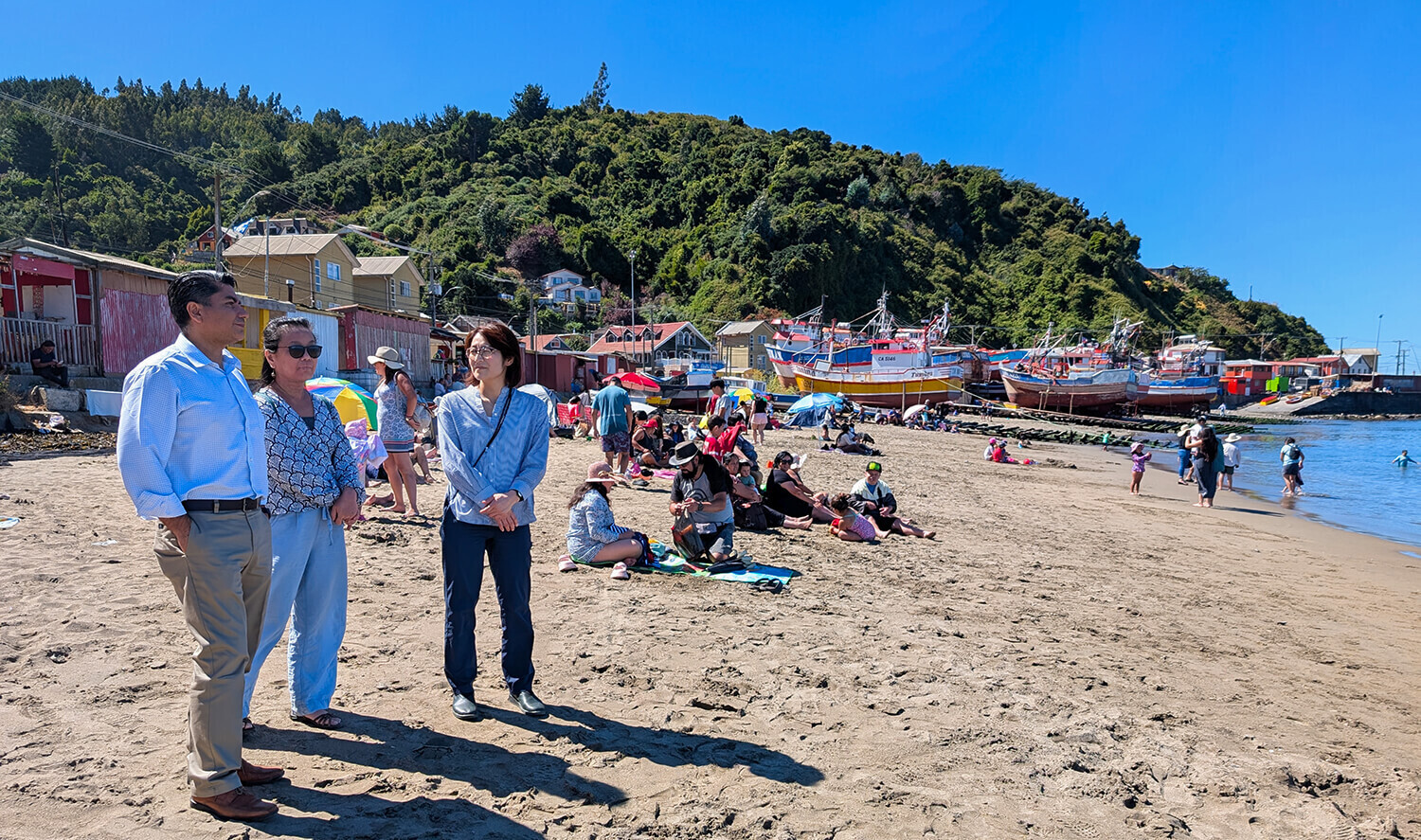update:August 7, 2025
A special interview for the Toyota Foundation’s 50th year anniversary project
Applying lessons learned on earthquakes from Japan to Chile:
Transnational collaboration focused on playfulness and life stories to boost disaster risk reduction and resilience in communities
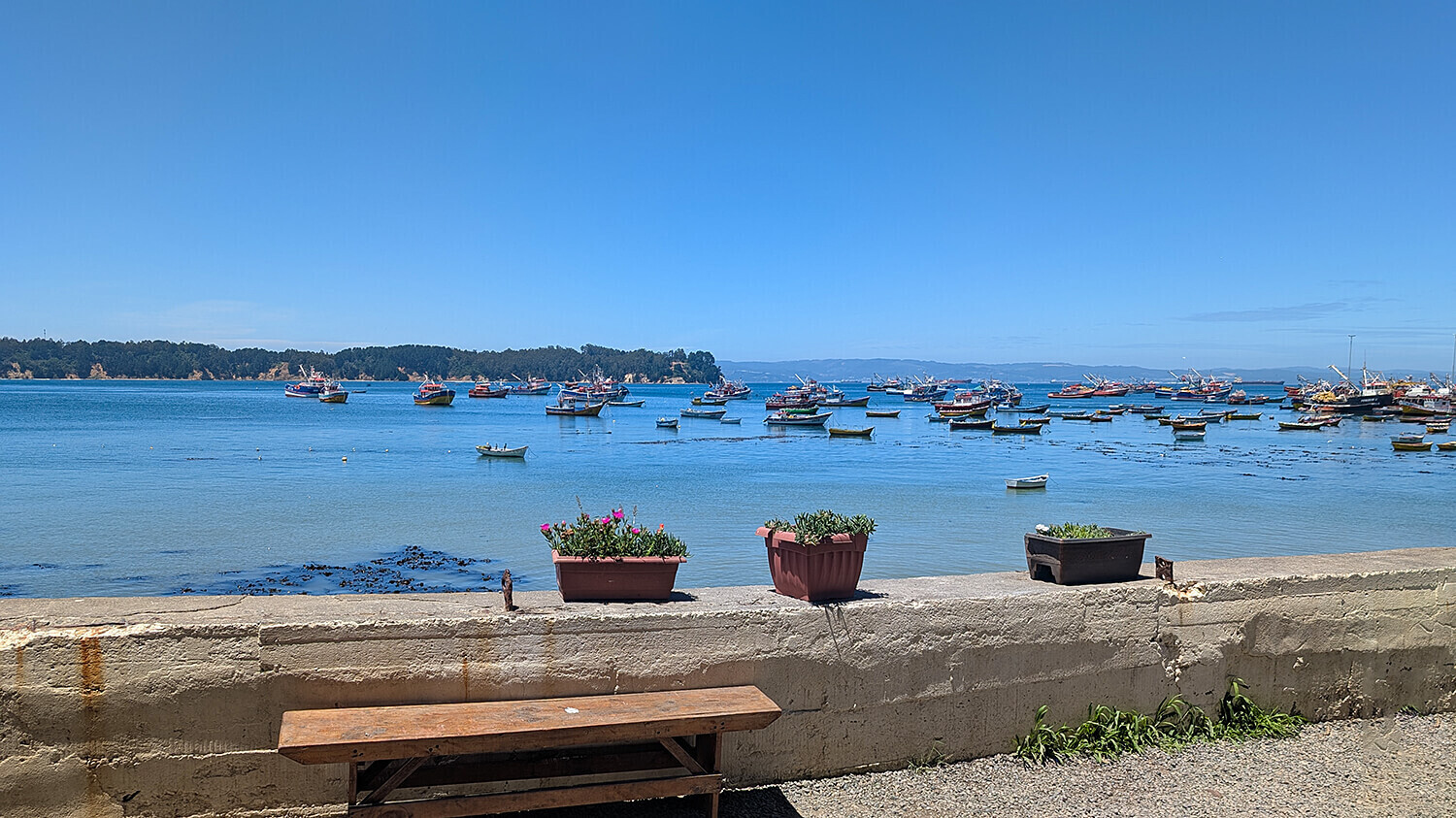
Interviewer: Michi Kaga, the Toyota Foundation
Writer: Naoto Okamura
Disaster strikes when you least expect it. This is a common aphorism that people hear both in Japan and Chile. But the real impact of this saying did not fully sink in with Dr. Chika Watanabe, an anthropologist and a senior lecturer at the University of Manchester, until her own family experienced two major earthquakes in Japan’s recent history – the 1995 Kobe Earthquake and the 2011 Great East Japan Earthquake. This sobering realization of how a major disaster can impact one’s immediate life steered her toward disaster risk reduction (DRR), or bosai in Japanese, as part of her academic research.
Halfway around the world from Japan, a major earthquake struck off the western coast of Chile in 2010. Mr. Boris Sáez, a city official of Talcahuano, experienced the earthquake and tsunami himself and saw how unprepared the city and Chile as a county were. In the wake of the disaster, international organizations such as the European Union and the United Nations came to provide assistance to local officials and residents. Japan International Cooperation Agency (JICA) was among those organizations, and it engaged in work on disaster risk reduction, a brand-new concept for Mr. Sáez. This experience piqued his interest in learning more about this approach and led him to Japan on four separate occasions in the subsequent years.
In an interview conducted at an office of the municipality of Talcahuano, Dr. Watanabe and Mr. Sáez talked about their life experiences, their project in Chile, and their hopes and dreams in their professional lives ahead.
Para la versión en español, haga clic aquí
Details
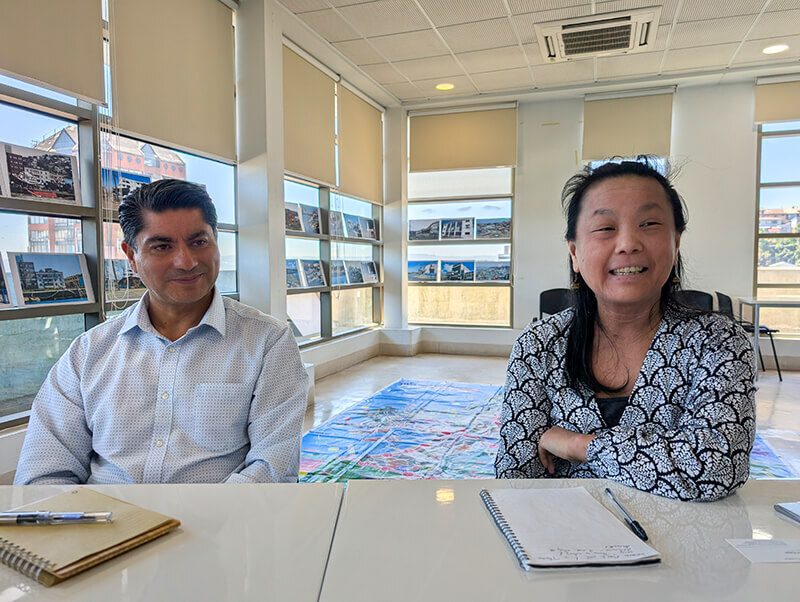
- Program
- 2018 Research Grant Program
- Project Title
- Translating Bosai Values: Investigating the Role of ‘Playfulness’ in Disaster Cooperation between Japan and Chile
- Grant Number
- D18-R-0022

- Grant Period
- May 2019 to April 2021
- Abstract of Project Proposal
- In the area of disaster response, sharing best practices is increasingly seen as the key to mitigating disaster risks across countries. Japan and Chile offer good examples as the two countries have engaged in cooperation in disaster preparedness for decades. This project aims to examine how ideas of disaster risk reduction (DRR) are translated from Japan to the Chilean context through employing “playful” approaches. This included a children-friendly board game and the sharing of life stories of disaster among intergenerational groups, both of which can help bolster people’s resilience in local communities. As such, the project illustrates how to design and implement effective disaster cooperation programs.
Her life story: a third culture kid becoming an anthropologist
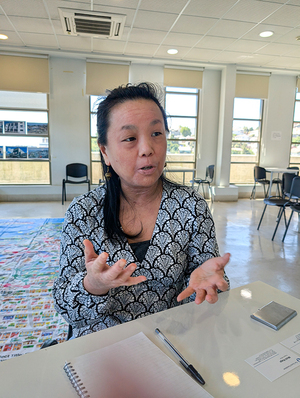
Although she was born in Japan, Dr. Watanabe spent her childhood years in Spain where she learned to speak Spanish. After she returned to her native country at the age of 10, she enrolled in an American school and learned English. Navigating Japanese, Spanish, and American cultures at a young age, she always felt that she didn’t belong in one culture. “I have always been interested in what it means to belong. What does it mean to have a culture?” she said. “When I went to university in the U.S., I learned about anthropology and it just made a lot of sense to me.”
Initially, she wondered if she should pursue her academic interest in anthropology or go to work in the NGO sector. She first took up a post at an emergency NGO in Japan and worked as a program officer for post-earthquake relief projects in Sri Lanka and Pakistan. She eventually decided to go on to do her PhD at Cornell University. “Only anthropology could answer [my] questions,” she said.
Her first research was about Japanese aid in Myanmar. Toward the end of this research, an unprecedented major earthquake hit her home country: the Great East Japan Earthquake.
On March 11, 2011, a magnitude of 9.0 earthquake, the strongest ever recorded in Japan, struck off the country’s northeastern coast, which triggered giant walls of tsunami and crippling incidents at the Fukushima nuclear power plant. “When I was in Myanmar, there were so many images [of the tsunami], and I just couldn’t continue with my research. So, I went back and helped. I volunteered with an NGO and helped with relief efforts in Tohoku,” she said. “Then, I started thinking that for my next project, I would like to do something about disasters.”
In fact, she realized that her own family members also suffered the impact of this massive Tohoku earthquake as well as the 1995 Kobe earthquake. At the time of the 2011 earthquake, her parents lived in the city of Urayasu, a municipality built on reclaimed land situated right next to Tokyo. It sustained the damage caused by large-scale liquefaction. The ground undulated, causing the suspension of gas and water supplies for weeks. “They could use the toilet. That was really good, but they didn’t have running water. They had to go out and get water from the municipal trucks,” she said. After 2011, her mother began enhancing the preparedness she had already been doing at home by regularly stocking up on water and food, as well as securing all the furniture in place.
What’s more, her grandmother lived alone in Kobe City when a magnitude of 7.2 earthquake hit the western port city on the early morning of January 17, 1995. Dr. Watanabe remembers her mother panicking at the time because they were unable to reach the grandmother. “Disaster affected areas are not just far away. I never understood that. There is something personal and professional in my research project that I find really compelling, very powerful about the topic [of disaster],” Dr. Watanabe said. “I was really interested in how disaster preparedness becomes part of people’s everyday lives in Japan.”
In 2016, she went to participate in a JICA training program in Tokyo. There, she first met Mr. Boris Sáez, who would later become her project partner in Chile. He was also in Tokyo for training. “I heard that he was from Chile and I was thinking that maybe I could do research about Japan and Chile because I already speak Spanish,” she said. During lunchtime, Dr. Watanabe went up to him to introduce herself. Subsequently, she visited him in Talcahuano for the first time in April, 2017.
His life story: how he got involved in disaster risk reduction
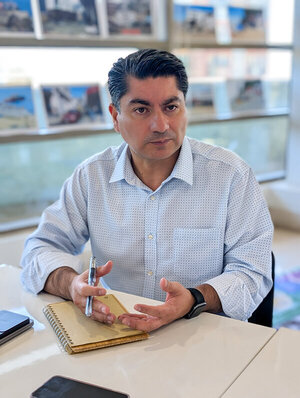
For his part, Mr. Sáez started working as a civil engineer in the municipality of Talcahuano in 2007, three years before a magnitude of 8.8 earthquake hit off the coast of south-central Chile in 2010. Despite its history of major earthquakes such as those in 1835 and 1960, the South American country was unable to fully leverage the lessons learned from these experiences. “We were not prepared. There was a tsunami here in Talcahuano,” he said. “All failed. The authorities, the community, and the schools. We started to see what our reality is.”
This experience made him realize that people become more vulnerable after a disaster, which can lead to higher risks for them in the future. “Every disaster affects your quality of life,” Mr. Sáez said. He has also come to understand that when a disaster occurs, people have a chance to learn a lesson. But if they fail to make use of this rare opportunity, disasters will continue to repeat themselves, he said.
Although there is a facility in the Chilean capital city of Santiago that provides information or support in case of disaster, it tends to only give instructions on what people should have in an emergency. In 2010, for instance, the authorities failed to issue a warning about a tsunami risk and just told people to go back to their homes, and many died as a result. “The communities are not considered in disaster risk reduction policies,” Mr. Sáez said. “We didn’t expect a tsunami even though we live near the sea. We didn’t know how to prevent, how to mitigate, and how to respond. Necessary information is not often available for communities when they need it the most.”
To address a paucity of awareness about disaster preparedness in Chile, he believes that education is essential. Rather than trying to hide negative memories about disaster, he thinks it is important to educate people about preparedness to reduce future disaster risks and not to forget about past disaster experiences. “Remembering is the first step to avoid a disaster,” Mr. Sáez said.
At the 2016 JICA training, where Mr. Sáez and Dr. Watanabe met, a Kobe-based NPO called Plus Arts presented its own bosai or disaster risk reduction initiatives. The non-profit was founded to mark the 10-year anniversary of the 1995 Kobe earthquake, with its mission to help people learn about disaster risk reduction in a fun and playful way. This approach particularly appealed to Mr. Sáez as he had sought to focus on the education of children as a key element in his disaster preparedness efforts.
He was inspired and decided to take a page from Plus Arts’s playbook. The Japanese organization employs various game-like activities, such as a board game or a water bucket relay, to help familiarize children and their parents with how to respond to disaster situations. He set out to do what Dr. Watanabe calls “translate” or apply this method to disaster education that he was conducting back home in Talcahuano.
Teaching Chilean children about DRR efforts
To spread the idea and practice of disaster risk reduction in Talcahuano, Mr. Sáez has been focused particularly on children. This is because children are motivated and open-minded and like to take on a new challenging task. Therefore, he has organized workshops in which he uses games to provide children with knowledge. “It is not a class. It is a game. So, you can motivate them more. And if it works for children, it will work for everyone,” he said.
His aim is to engage children in learning about disaster risk reduction and preparedness in a playful manner so that they will share that information with their families back home. “Children can be good communicators. You know, they can communicate about disaster risk reduction to their families,” said Mr. Sáez.
To this end, he went to talk to groups of directors and teachers at different schools, trying to convince them to cooperate in his endeavor. He believes the school is the only place that can validate each child as a person in the local social environment. “The school is a safe place [for many children]. I try to promote and give them a chance at learning about disasters. [If they say] I want to learn, they come here,” he said.
Moreover, he has found that holding disaster risk reduction workshops at school can serve as good training for teachers as well because they themselves don’t have a chance to acquire more skills and knowledge about disaster preparedness. After the workshops, he gives out a set of two brochures to the children -- one for the participant and the other for sharing with their loved ones such as family members or friends. A survey conducted by him and his team has found that more than 80% of the participants gave the brochure to someone else. “Everything starts with knowledge. Providing knowledge about how to prevent, how to prepare, how to respond, and how to share and spread the knowledge,” he said. “The more education, the less risk.”
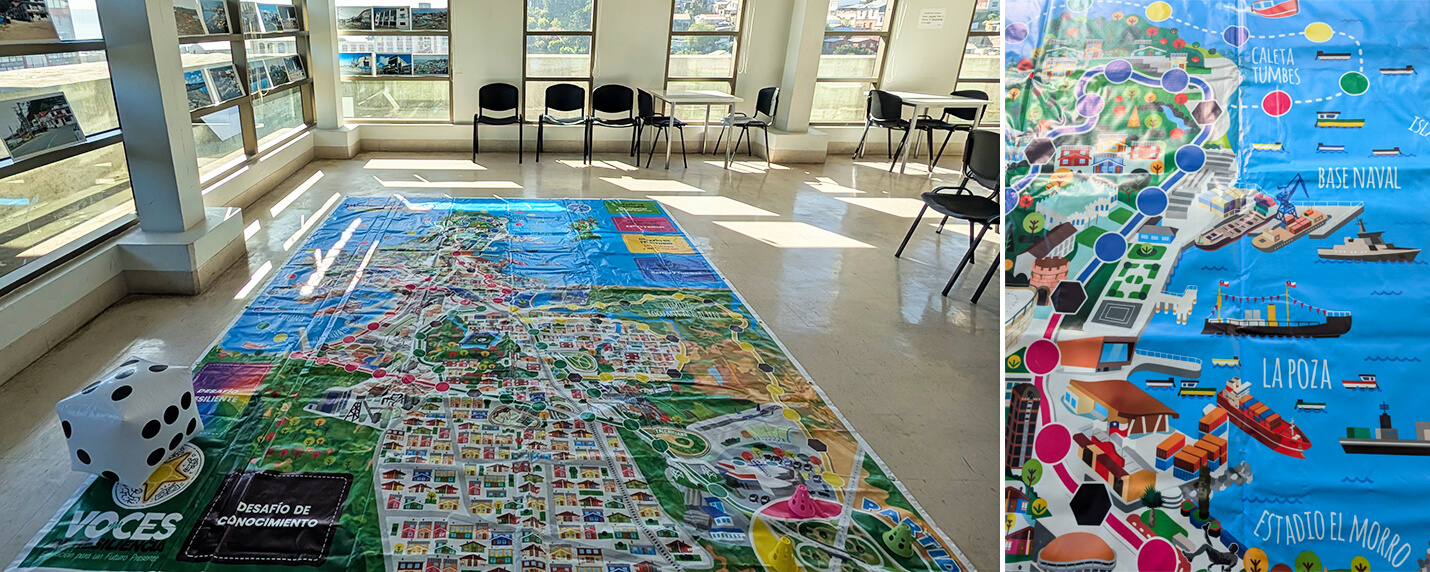
Telling survivor stories for DRR
Another activity which Dr. Watanabe and Mr. Sáez have focused on is collecting oral histories or stories of disaster survivors in Talcahuano. In 2017, Mr. Sáez and his team published photos of earthquake survivors, and some visitors told him that they had better pictures. So, he asked them to bring their photo and challenged them to write a 100-word-long story about it. “Disaster, never forget. This is the message about the importance of remembering,” he said.
Since then, Dr. Watanabe, Mr. Sáez, and other project members have started to collect stories from disaster survivors and research them for a project titled Voices of Resilience (Voces de Resiliencia). And yet, Mr. Sáez initially encountered some difficulty. He was disappointed at his first interviews. He kept asking the survivors about their lessons learned from the 1960 and 2010 earthquakes in Chile, but they didn’t give him the kinds of answers he had hoped to get. Eventually, he came to understand that their experiences in life in general was a lesson in and of itself. “This is [about] resilience. Life is not just about disaster. It is about overcoming various challenges,” he said.
Dr. Watanabe and Mr. Sáez also organized intergenerational workshops where children listened to the stories of older Talcahuano residents and drew pictures of what they felt most strongly about. This turned out to be a meaningful experience for both sides. These exchanges helped the older people feel that they were important, and some of the children connected with the adults based on shared experiences of loss. By interacting with these elders, they had a chance to release their emotions, which they usually kept in check.
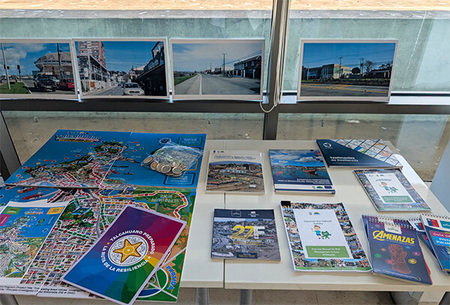
Through these activities, Dr. Watanabe and Mr. Sáez have been able to deliver four outputs: 1) a board game; 2) an illustrated book of the life stories; 3) a comic book; and 4) a documentary film. The board game is based on the local geography, context, and experiences of Talcahuano, and the illustrated book contains excerpts from the older residents’ stories of their experiences and lessons learned from the 1960 and 2010 earthquakes and ensuing tsunami, as well as the values they hold in life. The comic book is drawn by the children who took part in a session about disaster preparedness and comics organized by the Children’s Department of the City of Talcahuano. The comic book is designed to communicate knowledge about disaster risk reduction through children’s perspectives. Last but not least, a 40-minute documentary conveys the elderly people’s life histories of the disasters and the value of resilience in life and captures the intergenerational activities conducted in April 2022. The documentary can be watched here: https://youtu.be/Oa6GTnSAEhc![]()
These activities and the outputs are intended to help preserve the memories and lessons of disaster survivors’ experiences and the importance of resilience in life and to communicate them to future generations. “Resilience is not just about facing a disaster. It is about facing life [challenges]. It is a skill you need every day,” Mr. Sáez said. “Disaster risk reduction. That’s not a goal but a way to make people’s lives better in general.”
Future projects and dreams
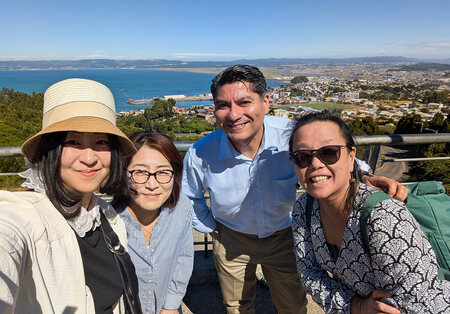
This grant-awarded project has been able to demonstrate that playful approaches are indeed effective in “translating” bosai or disaster risk reduction values from Japan to Chile and embedding preparedness in local resident’s day-to-day lives. This unique method, which is developed by Japanese non-profit Plus Arts, for making learning about bosai values a fun experience for children and adults alike is now taking root in the city of Talcahuano. But Dr. Watanabe and Mr. Sáez do not stop there. They feel that there is still a lot more to do to spread the message of disaster preparedness.
For her part, Dr. Watanabe hopes to receive more funding so that she can interview more older people in addition to the 12 interviewees she and Mr. Sáez already had. “It would be great to have more representatives of different parts of the community and do a similar activity with them, or maybe in different parts of Chile,” she said. “I would then be able to compare across different contexts. That would be really great.”
For that purpose, she is looking to make an application for a new source of funding in 2025, which she thinks would enable her to do more ethnographic research and better understand the family kinship dynamics in Chilean families. In some of the interviews she conducted in Talcahuano, she witnessed that parents were often busy, especially among vulnerable families, and could not even afford to sit and eat together with their children or listen and ask questions about what happened that day. “Boris and other people say children can communicate lessons about disaster risk reduction to their families. But in order to understand that, we need to understand how children communicate to others in their families, what spaces they have for communicating with their parents,” Dr. Watanabe said. “I want to understand better the role of children in family communication. To go deeper into what we have done here. That would be one of my dreams.”
In addition, there is another project she is interested in; it is about impacts of aging society and depopulation on disaster risk reduction efforts in local communities. In Japan, for instance, its population has been steadily declining and people are having fewer children. As a result, there has been a sharp increase in the number of single-person households. “How do you do community-based disaster preparedness when the family looks different and when there are fewer and fewer people?” she asked herself.
This demographic challenge is not just limited to aging societies like Japan. It is an issue facing Chile as well, for the country has the lowest fertility rate in Latin America. “No one talks about depopulation as a problem because the family is so important in Chile,” she said. The issue of disaster risk reduction efforts in the face of population decline is one of the next projects she intends to work on.
For his part, Mr. Sáez hopes that some children or teachers from Talcahuano will have a chance to travel to Japan and experience firsthand how disaster preparedness activities are conducted in Japan, just as he did himself when he came to JICA training sessions back in the 2010s. “I talk about my experience. But [if they have a chance to go to Japan,] everything can be their own experience. This would be better because they would be directly inspired by being in Japan themselves,” he said.
What’s more, he has another big dream: to make Talcahuano the capital of resilience. Chile has suffered disasters, but Mr. Sáez thinks the country has not always been well-prepared. To change that, his long-term idea is to build a facility dedicated to disaster risk reduction that would serve as a place to remember, experience, learn, play, show, and teach. “This facility could be [about] testimonies of disaster survivors,” he said. “This is the message of the elderly people. Their lives here are based on resilience.”
Having worked with Dr. Watanabe and other project members on disaster risk reduction through playful approaches, Mr. Sáez has come to believe strongly in the potential of the city. “Talcahuano could become the capital of resilience,” he said. “Why not? We have the experience. We have the knowledge. We have the people.”
